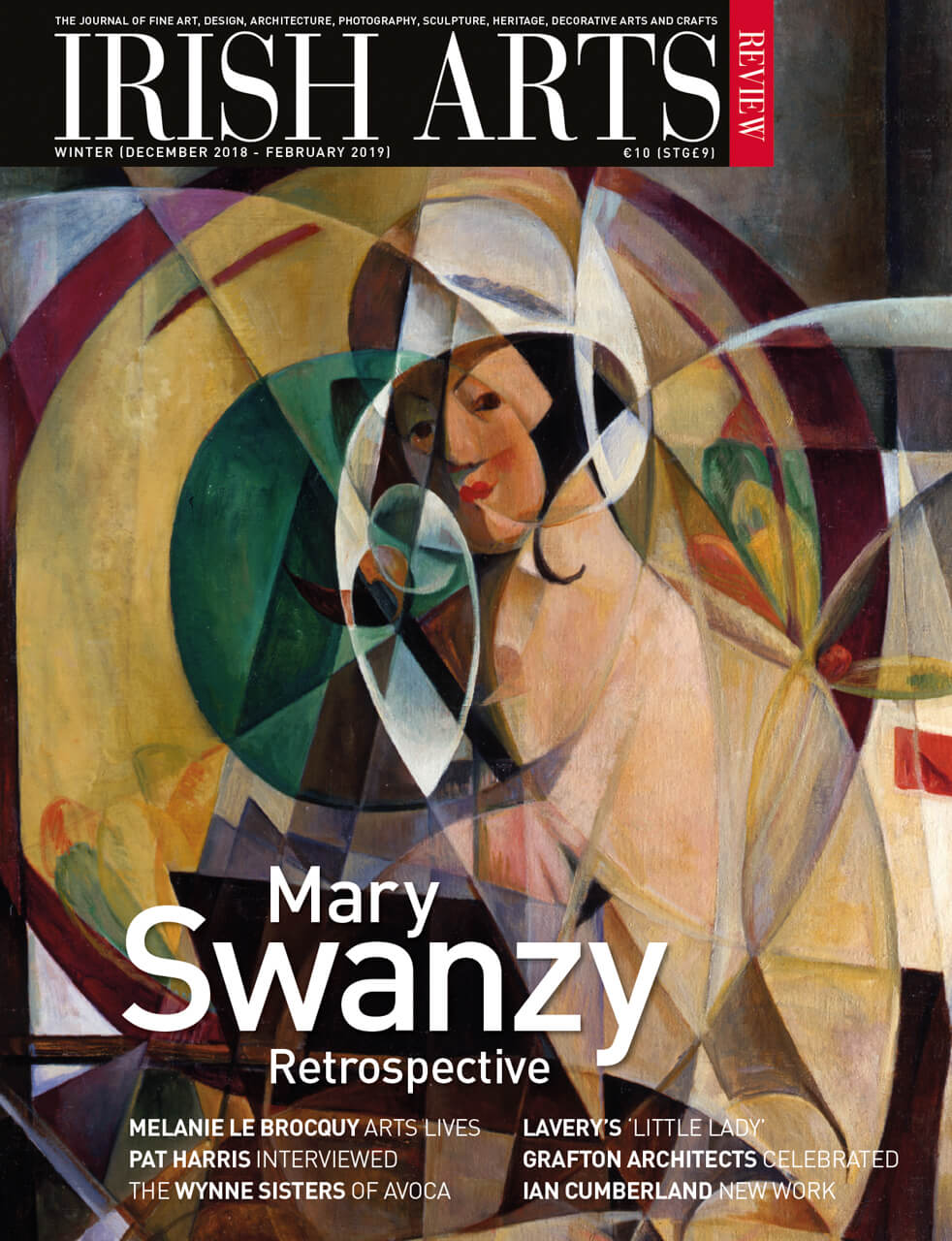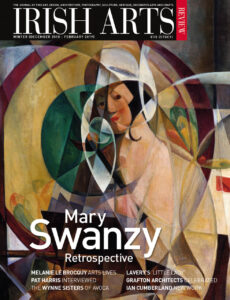

Anita Groener’s strength lies in a total focus on her theme and her art, an art that draws in and challenges the viewer, writes Judith hill
The room has dark walls and an even, muted light. There is a low background noise. From one of five monitors on the walls a girl, crouching, her body half hidden by an unseen object, looks out anxiously. She jumps up into an explosion of sound. She is frantic, shouting and gesticulating to someone out of the frame. Briefly, she wipes her eye and you see the pattern on her sleeve, and then she is back, crouching behind the unseen object.
‘Thank you./ Thank God I am fine!/ Thank you all. Have you pulled my mother and father/ from under the rubble?/ My mother, my mother … is she out?/ My sister, Safa?/ My brother?/ Are they out? Thank God.’
This is one scene from the Syrian war depicted in Moments that is part of Anita Groener’s current installation, ‘The Past Is A Foreign Country,’ at Limerick City Gallery of Art.
Instead of going to Syria to bear witness to the trauma as it is happening, Groener looks at the crisis from the periphery; through film and photographs and within her own imaginative engagement. From this vantage point she sees the innocent victims, many of whom are refugees, and how their lives have been irrevocably changed. And she sees the response of the rest of us. ‘The refugee crisis is our world’, she told me, ‘and we need to connect with it.’ This is her perspective. What do we see? How much do we feel? What are we doing? She is an artist who has taken it upon herself to challenge her audience with these difficult questions. It is political art that implicates the viewer and fills in the gaps left by reportage and the imaginative deficit of those whose lives have not yet been displaced.
It is political art that implicates the viewer and fills in the gaps left by reportage and the imaginative deficit of those whose lives have not yet been displaced.
Groener used video footage in Moments, but, crucially, she translates the images into line drawings that depict only the child in each of the five scenes. The lines were traced three times to create a ‘boiled line’ that pulsates when the subject is at rest. The brief bursts of action, carried on explosions of sound from the original video, are also brought to life by the words of, in four cases, the children (in one video it is a grieving mother that we hear) translated by Razan Ibraheen, a Syrian journalist based in Dublin. Thus the viewer’s response is focused on the experience of the children and their families and Groener gives us an opportunity to empathise. In Blink, a 39-minute loop of photographs of refugees shown at the rate of the blink of an eye, a grey frame between each shot, Groener shows us the limits of our empathy, demonstrating how hard it is to process frenzied contemporary footage. The viewer is drawn in by the high quality of the large, well-composed images and by being able to recognise themes – fathers carrying children; families photographed on sofas; people following a railway line for example – but is intensely frustrated by the speed with which the images succeed each other.
Line lies at the heart of Greoner’s aesthetic. Lines drawn or constructed, often using twigs. Lines denoting fragility, seen in Prolonged by a Hundred Shadows, where twigs projecting from the wall harbour tiny blade-cut paper silhouettes of refugees on the move, the delicate uneven twigs representing their routes and their world (Fig 1). Lines projecting, as in the case of Moments where the children are shown abstracted from their context, conveying universality. One particularly effective motif is the line marshalled into a grid. This is given masterly expression in ‘The Past is a Foreign Country,’ in which Groener exhibits twenty young birch trees in a five-byfour grid (Figs 2&3). The leaves have been stripped from the trees, the bare branches cut and reassembled with steel and twine in an orthogonal matrix. Each tree, still terminating in a root ball, is suspended from the ceiling. Lit by two low-level spot lights which cast muzzy lines on the white walls of the dim gallery, there is an atmosphere of calculated violence and mystery, within which the work resonates as an allegory of lives that have been arrested but must somehow continue in new and difficult circumstances. A related theme is explored in a neighbouring piece: a 28-minute film of the dismantling of a bird’s nest. Shot in black and white, the camera focuses on the brightly-lit nest and the hands pulling out the twigs, careful to take out each twig one by one. It is a deliberate demonstration of loss in which the beauty of the illuminated lines play their part in holding the attention and opening the mind to the implication of what is unfolding.
Groener’s strength lies in a total focus on her theme and her art, compelling her to versatility. The viewer is drawn in and challenged, soon at home in her world where grids depersonalise and stories particularise, and soon recognising, as she intends, that it is a world shared with many who have been traumatised and will need support in the rebuilding of their lives.
Anita Groener ‘The Past is a Foreign Country’, Limerick City Gallery of Art, until 6 January 2018
Judith Hill is an architectural historian and historic buildings consultant.



